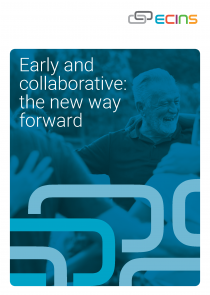Social isolation not only destroys confidence, but it also increases the risk of an early death by 26%, which makes it just as dangerous as smoking 15 cigarettes a day. According to Age UK, almost 2 million older people in the UK see their friends, family and neighbours less than once a month.
So how can technology help to abate this growing epidemic? Should we simply promote the virtues of social networking and video chat? Or is there a better way for whole communities to help the most vulnerable around them?
There’s a lack of neighbourliness in the UK and a reluctance to check on older people living alone. Gone are the days of leaning on the garden fence for a catch-up or chatting to a familiar face in the post office.
A survey by CARED4 discovered that only 30% of us even know who lives next door, so it’s no wonder that so many people feel cut adrift from society.
Technologies such as Skype, Facebook and Twitter are often cited as the solution, with the emphasis being placed on older individuals to get online when they need to. But there are two reasons why this approach is seriously flawed. Firstly, a survey by the Campaign to End Loneliness (CEL) found that around half of those living alone missed physical contact, such as a hug or just simply being with someone. Secondly, there’s a stigma attached to loneliness, which leads many to suffer in silence.
Technology to encourage acts of kindness
The right technology needs to comfort the lonely by creating opportunities for them to spend time with others in the real world. There are plenty of local options, such as Age UK’s befriending service, which involves a visit from a volunteer once a week. Or other local voluntary services, like Furry Tales, which provides animal-assisted activities.
The hardest part is discovering who the most vulnerable people are due to the stigma mentioned above. Many feel that by asking for help, they’re being a nuisance. They’d rather keep their true feelings under wraps, for fear of creating a fuss.
The only way to address this is for local communities to refer the socially isolated into a network of support on their behalf.
Once a referral is made, relevant services could be notified and appropriate action taken. Clearly, the referral would need to happen with the individual’s consent, but this shouldn’t be a problem if the person making the suggestion is a close family member or friend. It’s a way for people that care to identify someone that needs help.
In practice, this would involve the creation of a national loneliness database, which could be accessed by local voluntary services and the NHS. Once someone is referred into the platform, they’ll become part of a proactive network which works hard to keep them rooted in society.
Beyond this, there’s scope to use artificial intelligence to identify those most at risk. Several papers have uncovered a number of telling factors which indicate whether someone will become lonely and these could be used to develop algorithms. When someone is flagged as high risk, information about local support could be sent directly to their family.
Collaborating with other schemes
In January, the CEL received a £2.7million grant from the Big Lottery Fund to “tackle loneliness through community collaboration”. Part of this grant will create opportunities for the public to complete 250’000 acts of kindness, such as phone calls and volunteer work.
This type of initiative is the ideal catalyst for a national loneliness database. If each act of kindness could be recorded, the individuals receiving the care could then access a full range of ongoing help and support.
Built-in incentives
Volunteer incentives are a proven way of encouraging local communities to get involved. Various national schemes, such as Just Add Spice, reward volunteers for every hour spent in the form of “time credits”, which can then be exchanged with other participants or scheme partners. A mechanism for issuing these could be integrated into the loneliness platform to further motivate registered members.
Following a secure registration process, each member would access a simple dashboard displaying recommended tasks relating to the vulnerable people in their local area. Once each task is confirmed as complete, a time credit would be awarded accordingly. The platform could also produce reports on the number of volunteers taking part and identify trends in the level of community engagement.
Social isolation is a deep-rooted problem that requires an intelligent approach to technology. Older people are rarely asking for help due to the various stigmas attached to loneliness and social networking isn’t the answer. Only by creating a platform, which is embedded into local communities, can you begin to address the complex issues surrounding this national plight.


